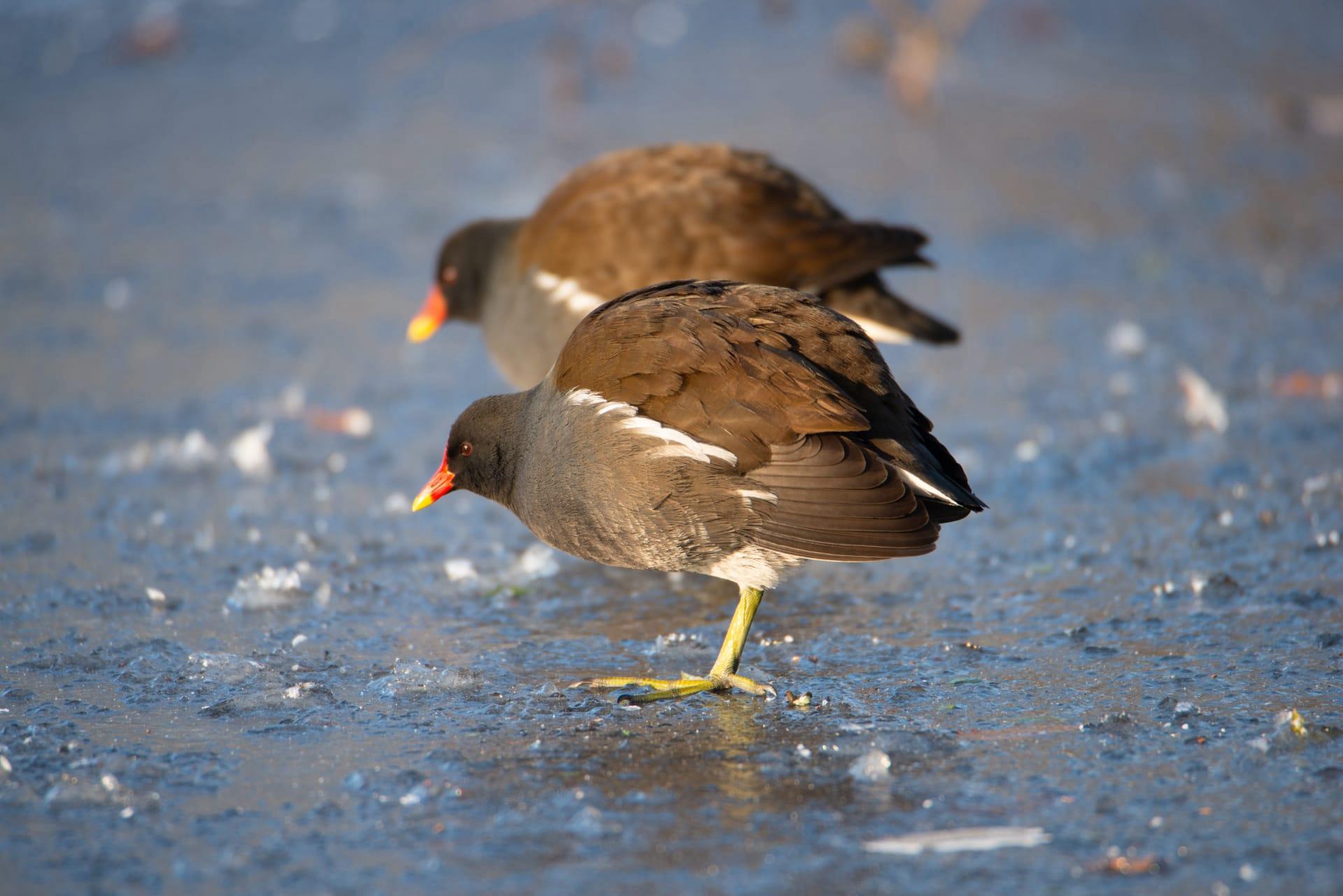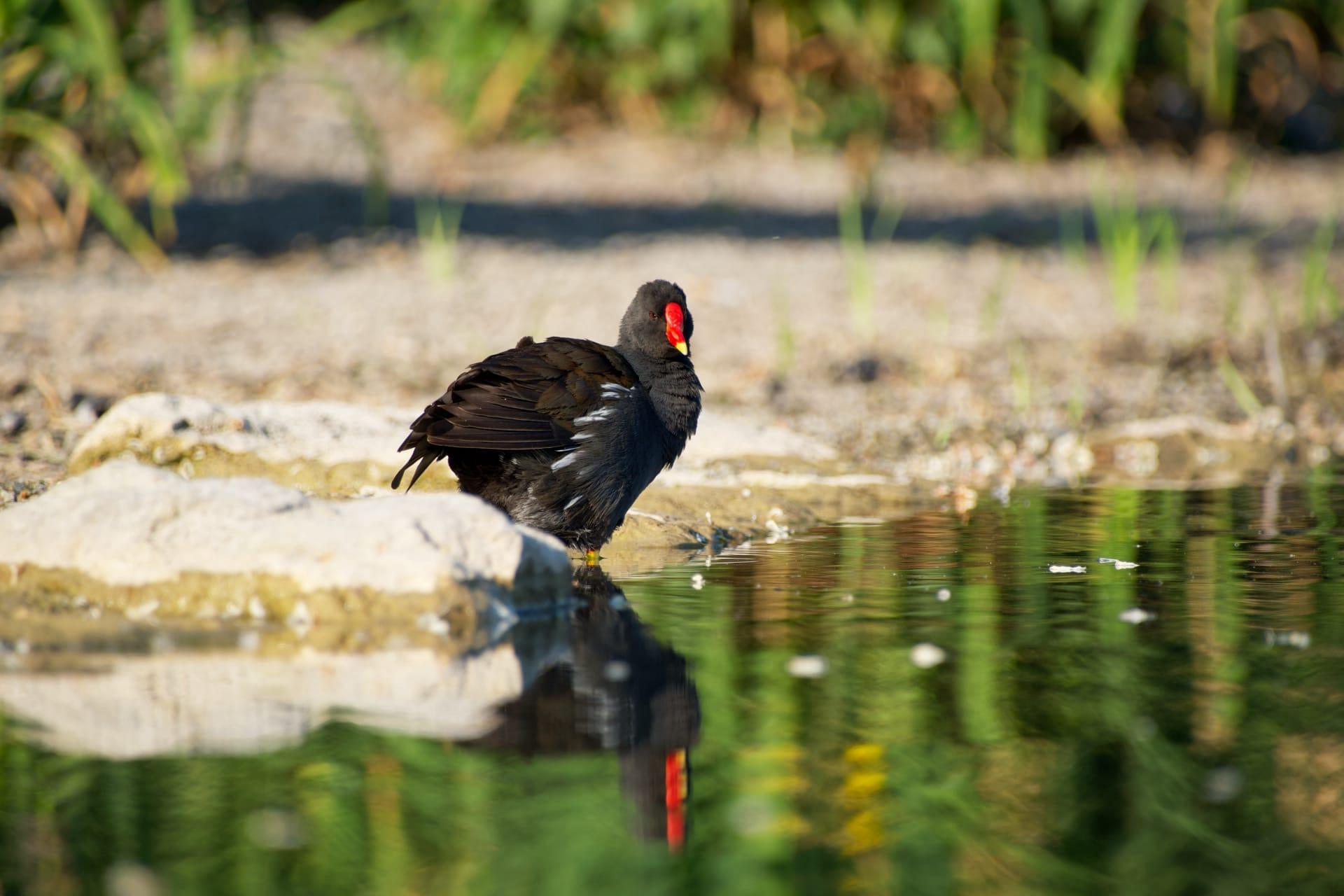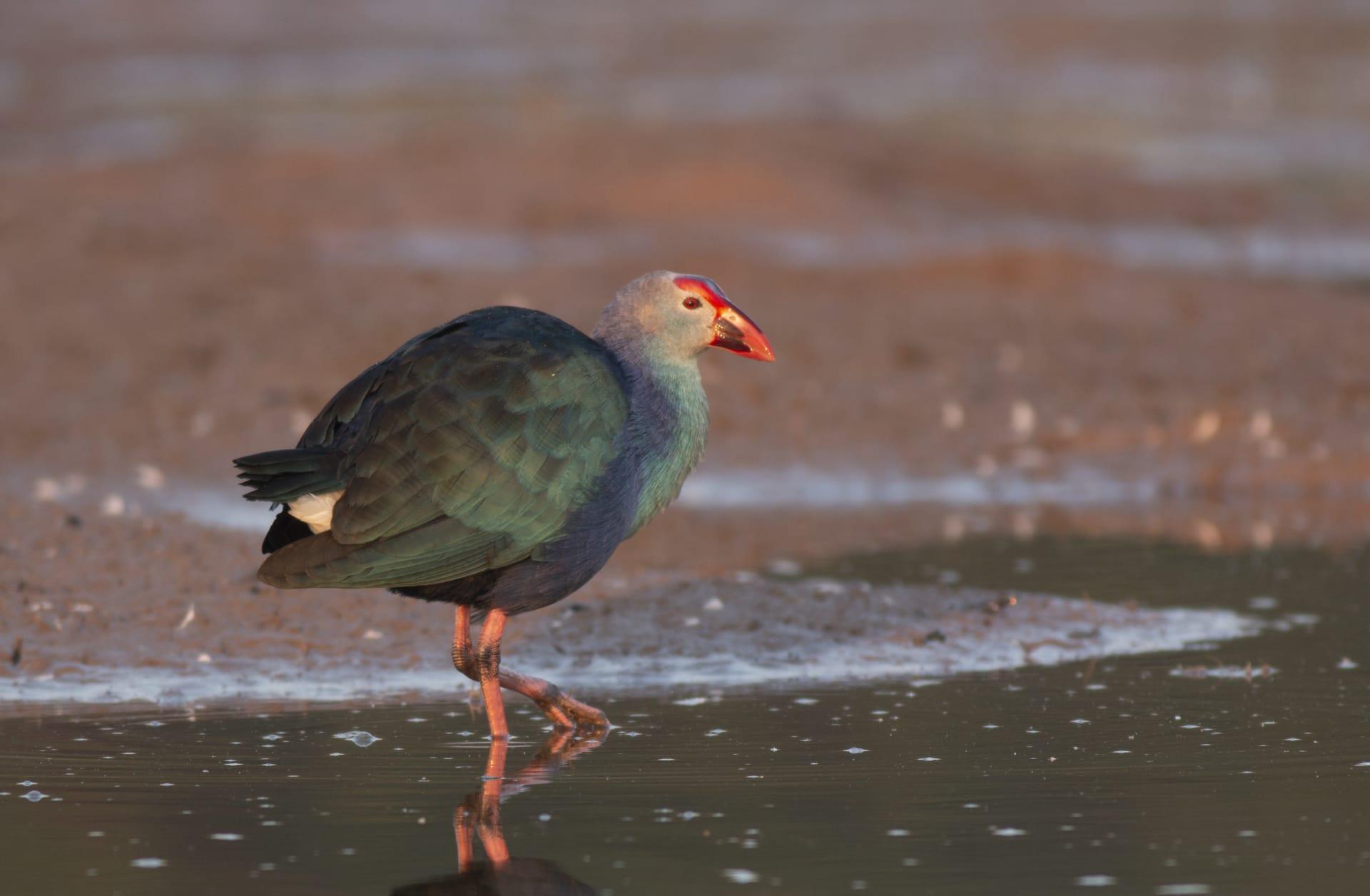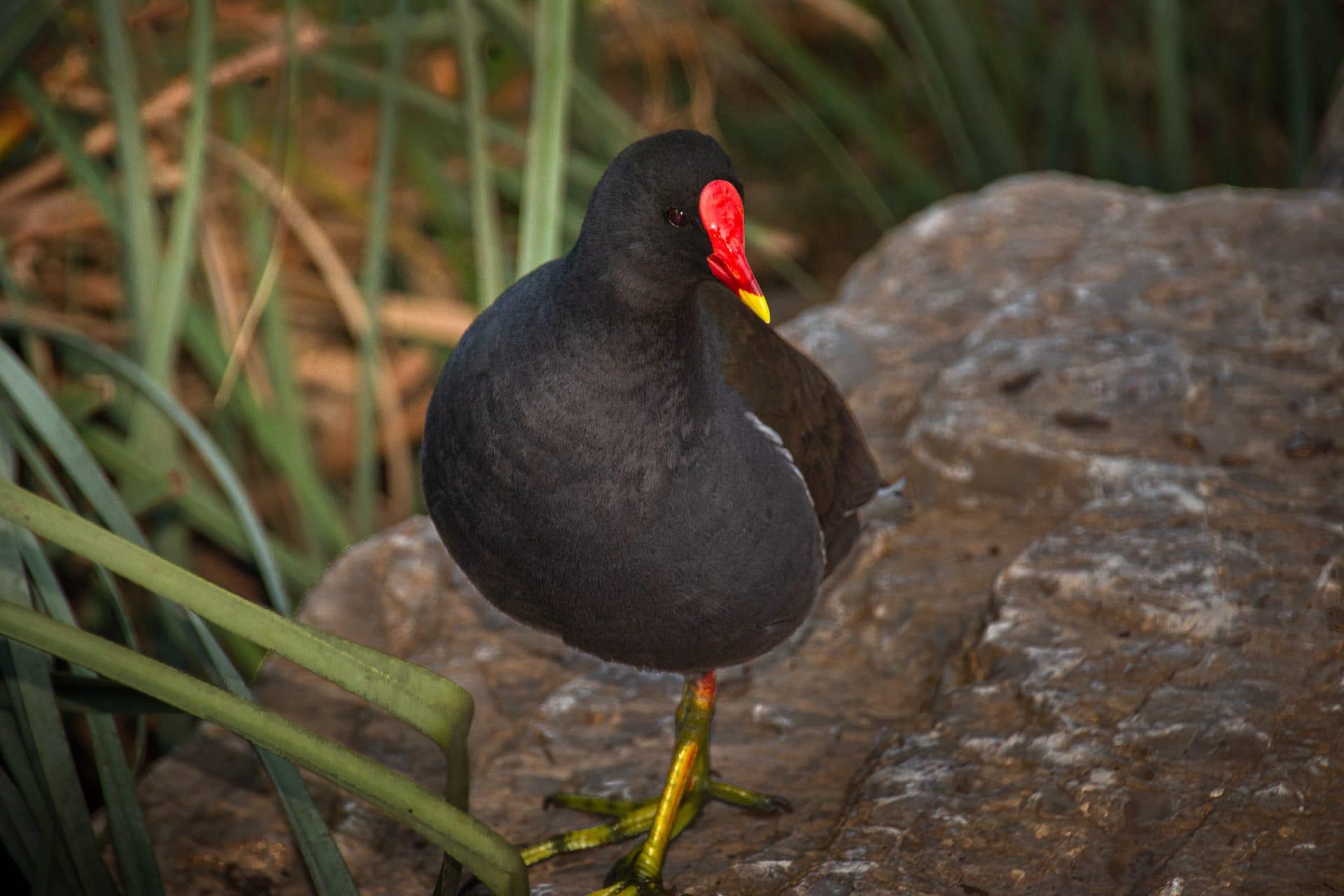Moorhen Characteristics
- Home /
- Mini Encyclopedia /
- Animal /
- Moorhen Characteristics
1
Moorhens, scientifically known as Gallinula chloropus, are fascinating birds with distinctive physical characteristics. These medium-sized waterbirds typically measure about 10 to 12 inches in length and weigh around 300 to 400 grams. Their lifespan, in the wild, can extend up to 5 years, although this can be longer in protected environments. One striking feature of Moorhens is their plumage, predominantly black and dark brown with a greenish sheen. Notably, they have a red frontal shield and beak with a yellow tip, adding a splash of color to their otherwise dark appearance.
One of the most unique organs of a Moorhen is its long, strong legs equipped with long toes. These are not just for show; they play a critical role in the bird's survival. The legs and toes are perfectly adapted for life in wetlands. Moorhens use them to walk on floating vegetation and even swim in water. The structure of their feet allows them to distribute their weight effectively, preventing them from sinking into the muddy marshes. This adaptation is crucial for foraging, nesting, and escaping predators.

2
Question: What do Moorhens eat?
Answer: Moorhens are omnivorous birds with a diet that varies depending on their habitat and the availability of food sources. They primarily feed on aquatic insects, small fish, and tadpoles, which they find in their wetland habitats. However, they are also known to eat vegetation, including leaves, seeds, and fruits. This varied diet is essential for their nutrition, especially during breeding season when they require more energy. Moorhens use their strong beak to peck at food and can even dive underwater to catch prey, showcasing their adaptability and resourcefulness in finding sustenance.

3
The locomotion of Moorhens is quite distinctive and serves them well in their aquatic environments. These birds are adept swimmers, using their strong legs to propel themselves through water with grace. When swimming, they often jerk their heads forward with each stroke, a characteristic movement among members of the rail family. On land, Moorhens walk with a confident gait, their long toes helping them navigate the muddy and marshy terrain of their habitat without sinking.
In terms of hunting, Moorhens are opportunistic feeders. They forage in the shallow waters of their habitats, using their beak to snap up insects, small fish, and aquatic plants. They are also known to catch flying insects in mid-air. During the breeding season, Moorhens become more aggressive in hunting to gather enough food for their chicks, often seen chasing after small aquatic creatures with remarkable speed and agility.

4
Moorhens are typically found in a variety of wetland habitats, including marshes, ponds, lakes, and rivers. These environments provide them with the necessary resources for survival, such as food and shelter. Moorhens are well-adapted to these wet environments, with their long toes allowing them to walk on soft ground and floating vegetation. They are also capable of swimming in open water, which is vital for escaping predators and foraging.
Reproduction is an integral part of the Moorhen's life cycle. They are monogamous birds and often mate for life. Nesting usually occurs in dense vegetation near water bodies. The female lays between 5 to 8 eggs, which are incubated by both parents for about three weeks. Once hatched, the chicks are precocial, meaning they are relatively mature and mobile from the moment of birth. Both parents are involved in feeding and protecting the chicks until they are ready to fend for themselves, which typically takes about 6 to 7 weeks.

5
Book: "The Secret Life of the Moorhen" by John Lister-Kaye, published in the UK in the 1980s. This book offers an in-depth look into the life and habits of Moorhens. Lister-Kaye, a renowned naturalist, provides vivid descriptions of their behavior, habitat, and the challenges they face in the wild. The narrative is enriched with personal observations and anecdotes, making it both informative and engaging.
Book: "Wetland Birds: Habitat Resources and Conservation Implications" by Milton W. Weller, published in the United States in 1999. While this book covers a range of wetland birds, it includes a substantial section on Moorhens. Weller, an expert in wetland ecology, discusses the ecological significance of Moorhens in wetland ecosystems, their role in the food chain, and conservation efforts needed to protect their habitats. The book is a valuable resource for anyone interested in wetland birds and conservation strategies.